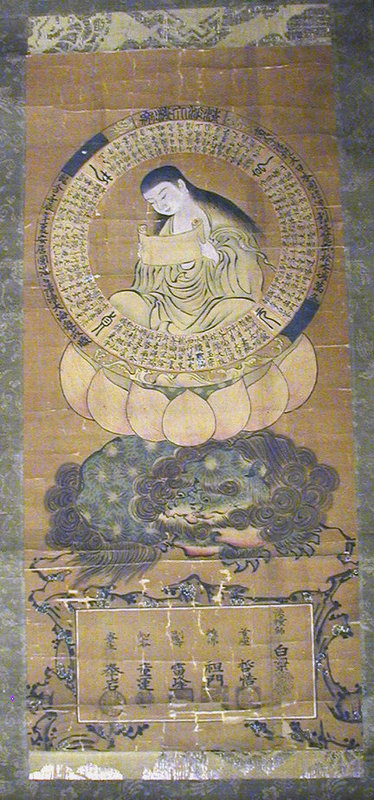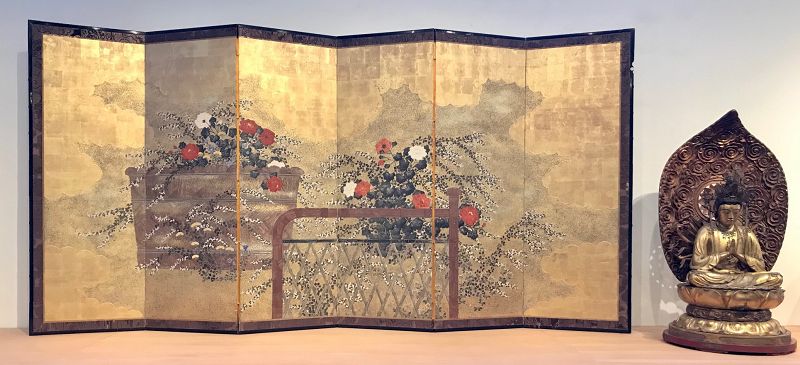Japanese 16th/17th century Scroll of Manjusri
Japanese scroll painting with a figure of Manjusri in the center of a circular chart below which sits a fu-dog; the very bottom of the scroll has numerous signatures and seal marks. The waves along the border of the circle indicate that this is a Sea-Crossing Manjusri (Tokai Monju). The text within the circle indicates that the painting comes from the Matsumoto castle in the Shinano province (the Nagano prefecture in central Japan). The document that comes with the scroll is signed Bankyu (can be read also as Mankyu). The large cartouche at the bottom of the painting lists names and ranks of monks most likely from one of the temples related to the Matsumoto castle. The characters in the circle is probably a list of names of patrons or lesser monks or both who might have participated in the production of the scroll. It is possible the the painting was made for a Zen temple -two characters in the outer cartouche on the left read "ge-ango" which means "summer meditation" that was practiced in Zen temples. The figure is painted with flowing drapery pattern derived from stylistic models that can be traced back to the Muromachi period painters associated with Zen temples (eg. the Tofukuji school founded by Mincho, and later the Kamakura school of painters. Painted in mineral colors on silk, 16th/17th century.
Size: 47" high x 15 1/4" wide
https://zentnercollection.com/product/japanese-16th-17th-century-scroll-of-manjusri/


